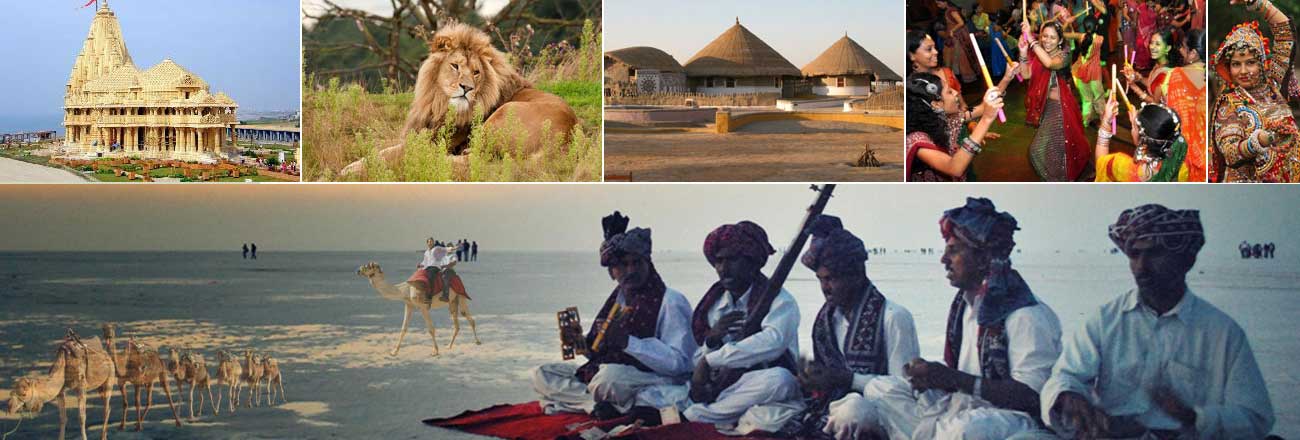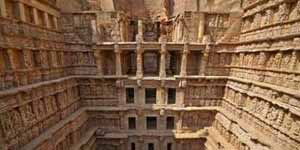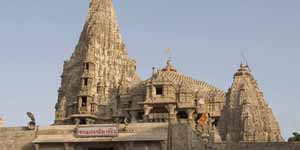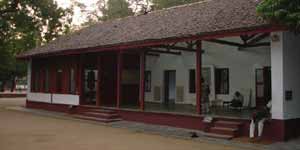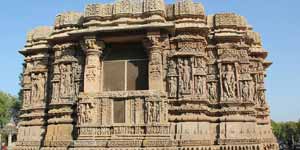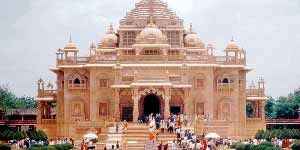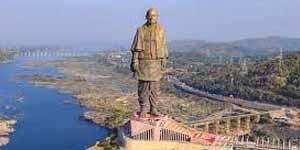
Somnath Mahadev Temple
The Somnath temple located in Prabhas Patan near Veraval in Saurashtra on the western coast of Gujarat, is believed to be the first among the twelve jyotirlinga shrines of Shiva. It is an important pilgrimage and tourist spot of Gujarat. Reconstructed several times in the past after repeated destruction by several Muslim invaders and Portuguese the present temple was reconstructed in Chaulukya style of Hindu temple architecture and completed in May 1951. The reconstruction was completed by Vallabhbhai Patel. The site of Somnath has been a pilgrimage site from ancient times on account of being a Triveni sangam (the confluence of three rivers — Kapila, Hiran and Sarasvati. SomaMoon god, is believed to have lost his lustre due to a curse, and he bathed in the Sarasvati River at this site to regain it. The result is the waxing and waning of the moon, no doubt an allusion to the waxing and waning of the tides at this sea shore location. The name of the town Prabhas, meaning lustre, as well as the alternative names Someshvar and Somnath (“The lord of the moon” or “the moon god”) arise from this traditionTemple History
The Temple is backed by a chequered and elaborate history. It is said the first version of the temple came into being even before the start of Christian era. The second version of the temple came into being under the initiative of the Vallabhi king around 408AD-768AD. This temple is often referred to as the ‘eternal shrine’ because historical records say that this temple has been destroyed several times by invaders and have been resurrected several times too.
Archaeological investigations point out that the temple of Somnath had been rebuilt nearly thrice before the raid of Muhammad Ghaznavi in the year 1026. Also, it is told that later the temple was attacked three times more. Thus the temple was attacked and destroyed as many as 6 times until the present 7th version emerged. The latest rebuilding of Somnath temple was done in 1947 under the initiative of Sardar Vallabhbhai Patel; the then deputy PM. Prabhashankar Sompura was chosen as the architect and thus the present day Somnath temple came into being. On 11th May, 1950 the then president of the country, Rajendra Prasad inaugurated the temple.
Some of the ancient texts tell that the temple was built for the first time in gold by king Somraj during Satya Yuga. In Treta Yuga, Ravana had built it out of silver while in Dwapara yuga lord Krishna had built it out of wood. Later King Bhimadev had built the temple out of stone. That is the claim of some of the ancient scriptures of our country.
Monuments in Gujarat
Monuments in Gujarat The words history, heritage, culture and traditions describe the true glory of Gujarat, one of India's very well-known and truly effervescent states. Each nook and corner of Gujarat, steeped in the past, bears witness to the richness and royal grandeur once enjoyed in this region. Today some of the most unique places that testify to the glorious days gone by are none but Gujarat 's timeless forts and monuments.Gujarat forts and monuments make up a very significant part of Gujarat's many types of tourist attractions. In reality it won't be an overstatement to say; Gujarat 's beauty has reached a unique height with these in the background. Modern buildings built in the middle of the old today appear to exemplify the idea of tradition and step forward in time bringing along old principles. The synthesis of old and modern has fooled every heart and mind with precision. In fact, this combination not only speaks of Gujarat's grandeur but also expresses some of India's sublime values, for which it is recognised throughout the world.
You will come across many fascinating details about them while visiting the forts and monuments in Gujarat on your trip to Gujarat. Not only do you enjoy the undying sagas associated with these sites but also the sophisticated architectural styles in which they boast. These sites gasconade's art work is the sight to feast your eyes on.
Looking closely at Gujarat forts and monuments, you can find that most of these sites exhibit a mixture of Hindu, Islamic and European architectural styles. The time of wooden furniture forming an important ingredient in these areas. You'll enjoy every bit of your tour to Gujarat forts and monuments, to state laconically.

